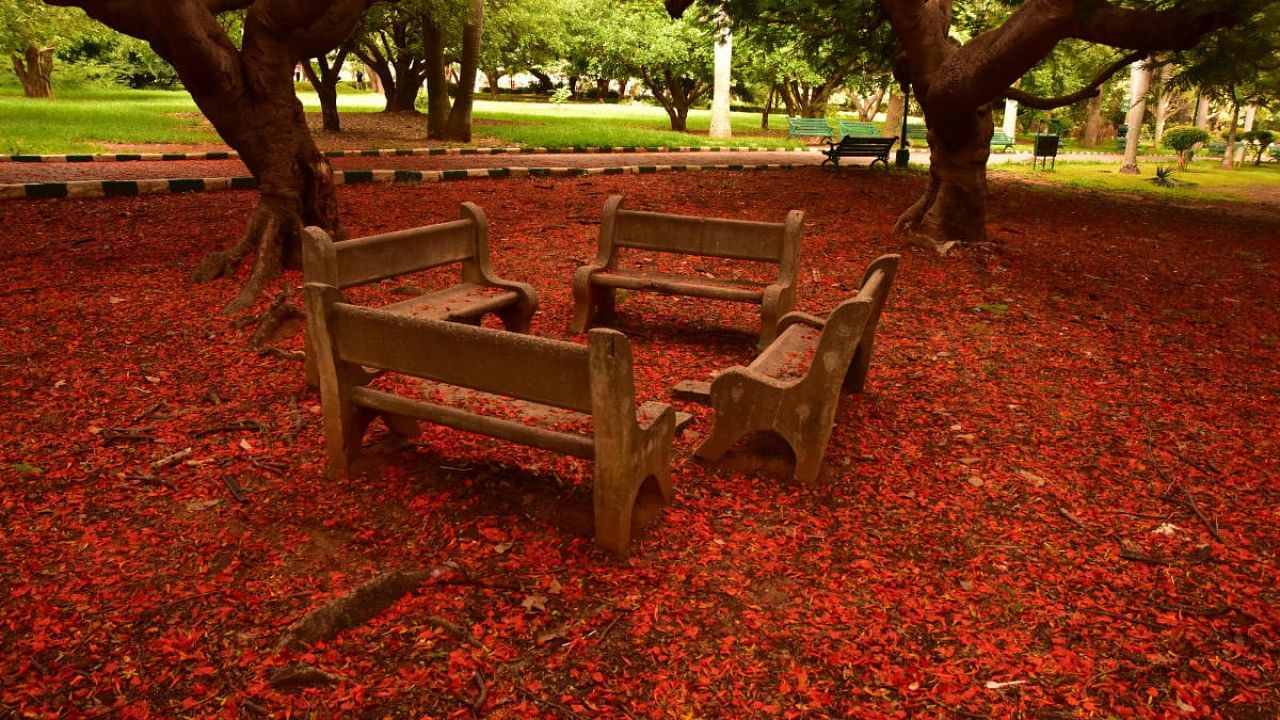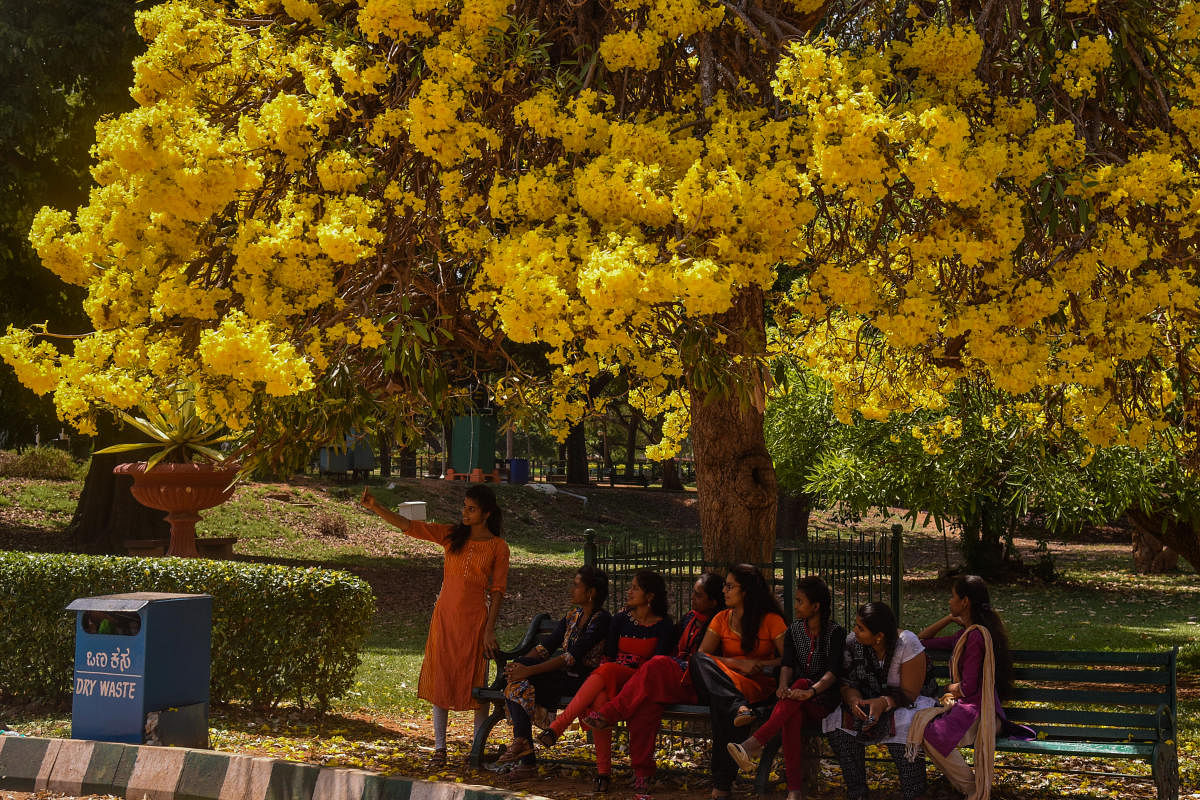

In Disney’s 2021 hit movie Encanto, the protagonist’s sister Isabella has the power to grow flowers. Since it is set in Colombia, the flora and the fauna you see are native to the South American country. But what if I told you that the trees Isabella swings from can be found in Namma Bengaluru?
Trees like Jacaranda and Tabebuia are now associated with Bengaluru and its garden city tag.
“They have been here for over 150 years,” says Harini Nagendra, an urban ecologist and a Professor at Azim Premji University, Bengaluru. “They are no longer invasive species. For all purposes, they have been naturalised to the environment. They are part of the [city’s] landscape”
But this does not mean that trees just sprung up out of nowhere. Rather, they were brought here specifically for their beautiful flowers, a result of the pioneering efforts of Indians and foreigners.
Deep roots
Old maps of Bengaluru, when the city was still a cluster of villages, shows that it hardly had any vegetation. As Harini Nagendra notes in her book, Nature in the City: Bengaluru in the Past, Present, and Future, Bengaluru and its surrounding region was “semi-arid, with thorny scrub vegetation”.
Since there was a scarcity of water, large trees thrived only when there was human intervention.
The founder of Bengaluru, Kempegowda, apparently carefully selected this particular area for its inaccessibility. When building the pete area of the nascent city in 1537, these thorny shrubs and “dry, deciduous forest vegetation” became a natural defence around the settlements. Many sacred trees like Peepul, Banyan with traditional kattes, acted as a site of banter.
“There were lots and lots of coconut trees in the pete area,” says Harini.
Later, when the city fell into the hands of Hyder Ali and Tipu Sultan, it saw the development of numerous parks and gardens. It was not until the British took control of Bengaluru after the defeat of Tipu in the Fourth Anglo-Mysore war (1799), did the pink blooms of the Tabebuia enter the picture.
Hybrid aesthetics
The first seeds of the Tabebuias may have been planted some time in the 19th century. After capturing the fortified pete area, the British settled down just outside. This became the cantonment.
Nostalgic for the home they had left behind, the British sought to recreate it here. They wanted large trees that would shield them from the infamous Indian summers. So they brought in Tabebuias, Raintrees, Copper pods, African tulips, Jacarandas and planted them on either side of the streets
However, this concept of avenue trees was not new to Bengaluru. Earlier rulers like Kempegowda had planted shade trees and placed water fountains at road intersections. The British only differed in the selection of species, going for trees like Tabebuia for their ornamental value, after consulting with several horticulturists and botanists from as far as Kew Gardens, London.
Gustav Herman Krumbiegel was one such person. A consultant to the Maharajah of Mysore, the German botanist and horticulturist brought the trees of South American origin to the streets of Bengaluru. Though the trees were exotic, the principle behind the selection was very Indian. Borrowing the concept of seasonal blooming from Kalidasa’s poem Ritusamhara, Krumbiegel selected trees in such a way that Bengaluru would witness seasons of blooming throughout the year.
You can witness this even today. In March, the famous flowering trees of the city stretch their arms high and wide into the sky like a person waking from a long siesta, ready for the blooming season of the Jacarandas. In May, it is the Gulmohar. The pink and yellow flowers of Tabebuia generally mark the arrival of the new year.
“The British aesthetic is very much about the visual. Large raintrees with majestic canopies, African Tulips with large orange-yellow flowers, tabebuias with pink, purple and yellow flowers are all spectacular blossoms. But they have no smell or scent,” explains Harini
In contrast, the Indian aesthetic placed significance on scent and how useful they are. For example, a white flower like jasmine with a strong scent or a medicinal herb like Tulsi would be found in pete areas like Malleshwaram and Basavanagudi rather than cantonment areas.
Though the tabebuias are most visible in the cantonment areas like M G Road, Cubbon Park and its surroundings, the divide has largely disappeared. You can find a Tabebuia even in Nagarbhavi!
Greening a growing city
Post independence, there have been very few planting drives. All the greenery that Bengaluru enjoyed in the 1980s and early 90s was the effort of the late S G Neginhal, a retired Indian Forest Service official. At one point, Neginhal went door-to-door asking what kind of trees and what colour of flowers people wished to have around their homes.
In an old interview with Deccan Herald, S G Neginhal spoke about how he managed to establish nurseries throughout the city.
“Bengaluru’s area was 350 sq. miles then. The officials did not have enough nursery stock. There were only 1-2 nurseries with 5000 saplings. It was not possible to supply saplings for a large plantation drive. So, I established 7-8 nurseries across the city, ensuring each of them had 1 crore saplings as stock at any given time” Neginhal said.
But since then, more trees have been cut for road widening, flyovers and other infrastructure projects.
“Government does not want to plant trees on the side of the road. Their thinking is that tomorrow when they widen the road and trees have to be felled, activists will protest. So, it is better to not have any trees,” says Harini.
Most of the trees we see today around the city are decades old, excluding the centuries-old heritage trees. As city streets are being dug up for the smart city works, it is essential to ask whether it is possible to imagine Bengaluru without its trees? If not, where are the plantation drives like the ones led by Kempegowda, Tipu Sultan, Krumbiegel or S G Neginhal?
Can a city be really smart after getting rid of its living symbols of history?